Breast Reduction in Korea
Considering a breast reduction procedure can be a significant and life-changing decision, particularly for those struggling with physical discomfort or self-esteem issues due to overly large breasts. Korea has emerged as a top destination for medical tourists seeking high-quality breast reduction surgeries. This article aims to guide you through the entire process of getting a breast reduction in Korea, including an overview of the procedure, different surgical techniques such as the Vertical Technique, Inverted T Technique, and Liposuction Technique, as well as detailed preparations and post-operative care. Additionally, we will explore the benefits of utilizing a specialized medical tourism agency like Shin Medical to ensure a seamless and stress-free experience. By the end, you will have a comprehensive understanding of what to expect and how to prepare for a successful breast reduction surgery in Korea.
Contents
What Is Breast Reduction?
Breast reduction, also known as reduction mammoplasty, is a surgical procedure tailored to remove excess breast fat, glandular tissue, and skin in order to achieve a breast size in proportion with the body and to alleviate the discomfort often associated with overly large breasts. This procedure not only aims to enhance the aesthetic appearance of the breasts but also to improve physical comfort and overall quality of life.
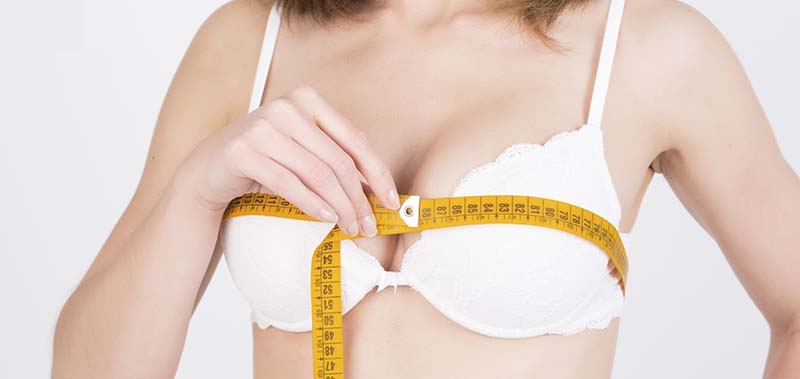
1. Different Surgery Techniques for Breast Reduction
Vertical Technique
The Vertical Technique, also known as the lollipop incision or short-scar breast reduction, minimizes scarring while effectively reducing breast size and reshaping the breast contour. This method involves two main incisions: one around the circumference of the areola (periareolar incision) and another extending vertically from the bottom of the areola to the natural breast fold, resulting in a lollipop-shaped scar and avoiding the need for a horizontal scar along the breast crease. The surgeon removes excess breast tissue, fat, and skin, reshaping the remaining tissue to create a natural, lifted contour. The nipple and areola are often repositioned to a more youthful location, with the areola size possibly reduced for better proportionality. Ideal candidates are those with moderate excess tissue and skin seeking effective results with less scarring. Benefits include reduced scarring, enhanced aesthetics, and effective tissue removal, leading to a more natural appearance. Patients may experience quicker recovery and less discomfort compared to more extensive techniques, with proper post-operative care being crucial and regular follow-up visits essential to monitor healing for optimal results.
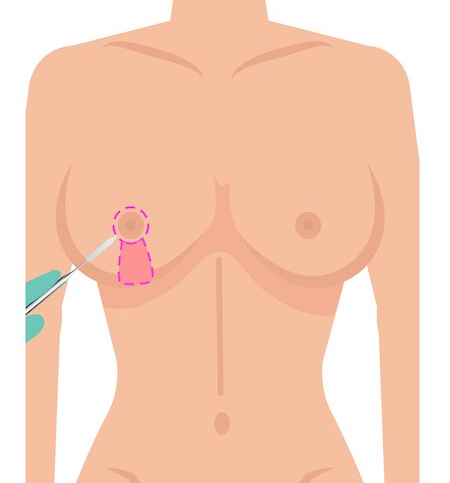
Before Surgery: Vertical Incision
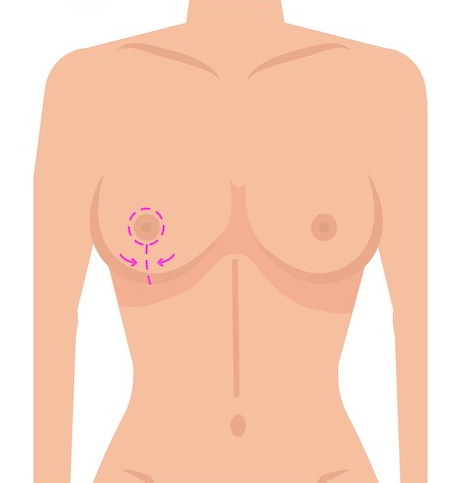
After Surgery: Vertical Incision
Inverted T Technique
The Inverted T Technique, also known as the anchor incision, is a comprehensive method for breast reduction and mastopexy (breast lift) procedures, particularly suited for individuals with significant excess tissue, skin, and sagging. This technique involves three incisions: one around the circumference of the areola (periareolar incision), a vertical incision from the bottom of the areola to the breast crease, and a horizontal incision along the natural breast fold, forming an anchor or inverted T shape. This allows the surgeon to remove substantial tissue and skin, reshaping and lifting the remaining tissue for a more proportionate, youthful contour, with the nipple and areola complex typically repositioned higher. Ideal for individuals with large, heavy breasts needing considerable reduction and reshaping, this method offers maximal tissue removal and extensive reshaping capability. Although it involves more extensive scarring, the scars are usually well-concealed along natural breast contours and can fade over time with proper care. Post-operative recovery involves managing symptoms like swelling, bruising, and discomfort, with pain medication and adherence to care instructions aiding recovery. Patients should avoid strenuous activities and wear a supportive surgical bra during the initial healing period, with regular follow-up appointments ensuring the best outcome.
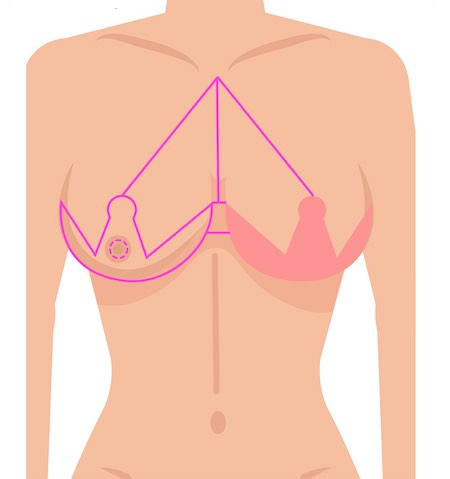
Before Surgery: Inverted T-cut Incision
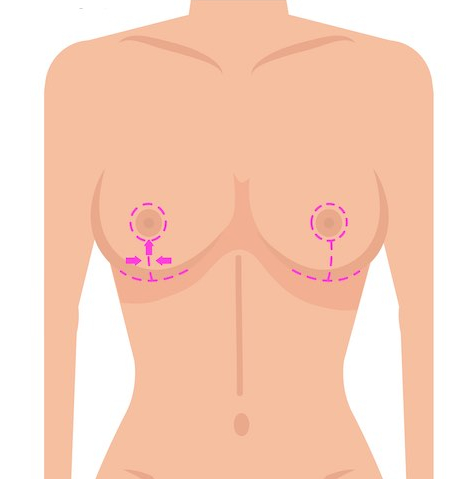
After Surgery: Inverted T-cut Incision
Liposuction Technique
Liposuction breast reduction is a minimally invasive technique aimed at decreasing breast size by removing excess fatty tissue through liposuction, suitable for individuals whose breast enlargement is primarily due to fatty deposits rather than glandular tissue or skin excess. The procedure begins with small incisions in inconspicuous areas like the underside of the breast or around the areola, with a tumescent solution (including a local anesthetic and vasoconstrictor) injected to numb the tissue and minimize bleeding. A thin cannula is then inserted to suction out unwanted fat, resulting in a smaller breast size and more contoured shape. Advantages include minimal scarring, shorter recovery, and reduced postoperative pain compared to traditional techniques. As the procedure involves limited tissue excision and no significant reshaping or skin removal, patients can often return to normal activities more quickly. This technique may not suit those with significant sagging or requiring extensive reshaping, as it mainly targets fat removal. Candidates should have good skin elasticity to ensure the skin contracts well after fat removal. Regular follow-up appointments are essential to monitor healing, making liposuction breast reduction a viable option for achieving a proportional breast size with minimal downtime.
2. Why Get a Breast Reduction Procedure?
Breast reduction surgery can be life-changing for individuals facing physical and emotional challenges due to overly large breasts. Here’s a closer look at why someone might consider this procedure:
Physical Discomfort and Health Issues
- Chronic Pain: Large breasts can cause significant strain on the neck, shoulders, and back, leading to chronic pain and poor posture.
- Skin Irritations: Excessive breast tissue can contribute to skin irritations and rashes under the breast fold.
- Activity Limitations: The weight and size of large breasts can restrict physical activities, making it difficult to exercise or engage in sports.
- Nerve Pain: Enlarged breasts can sometimes cause tingling or numbness in the arms due to nerve compression.
Emotional and Psychological Benefits
- Body Image: Large breasts can lead to self-consciousness and dissatisfaction with body appearance. Breast reduction can enhance body confidence and self-esteem.
- Clothing Fit: Finding well-fitting clothing can be a significant challenge for individuals with large breasts. Reducing breast size can offer more clothing options and a better fit.
- Social Comfort: Reducing breast size can alleviate unwanted attention and social discomfort, contributing to improved mental health.
3. Limitations of the Breast Reduction Procedure
While breast reduction surgery provides numerous benefits, it’s essential to understand its limitations:
- Age-Related Changes: While the procedure can significantly improve breast aesthetics and alleviate physical discomfort, it does not prevent natural aging processes. Breasts may still change due to gravity, weight fluctuations, and hormonal factors over time.
- Scarring: Surgery inevitably involves incisions, which will result in scars. Although surgeons aim to make scars as inconspicuous as possible, and they usually fade over time, they will never completely disappear.
- Breastfeeding: Breast reduction can impact breastfeeding capabilities. Those considering future pregnancies should discuss this with their surgeon as specific techniques can be used to best preserve breastfeeding potential.
- Symmetry: Although surgeons strive for optimal symmetry, perfect symmetry cannot be guaranteed. Minor asymmetries in breast size, shape, or nipple position may persist.
- Sensation Changes: There is a risk of altered nipple and breast sensation post-surgery. While sensation often returns as nerves heal, some loss of sensitivity may be permanent.
- Surgical Risks: As with any surgical procedure, breast reduction carries potential risks, including infections, bleeding, and adverse reactions to anesthesia. These risks are typically minimized when performed by experienced surgeons in accredited medical facilities.
Understanding both the potential benefits and limitations of breast reduction surgery is crucial for making an informed decision. In Korea, experienced plastic surgeons provide comprehensive consultations and personalized treatment plans to ensure that patients’ expectations align with achievable outcomes. This holistic approach helps medical tourists achieve satisfactory and life-enhancing results.
How To Prepare for Breast Reduction Procedure in Korea
Preparing for a breast reduction procedure in Korea involves several essential steps, from initial consultations to post-operative care. A well-structured preparation plan ensures a smooth surgical experience and optimal results.
Surgery Time
Breast reduction/lifting surgery takes around 1-2 hours.
Hospital Stay
You need to stay for 1 night after surgery.
Days in South Korea
We suggest you stay at least 14 days after surgery.
Recovery
It takes 2 to 3 months to recover from breast reduction/lifting surgery.
Here’s a detailed guide to help you prepare:
Initial Consultation with a Plastic Surgeon
Your breast reduction journey in Korea begins with an in-depth consultation with a qualified plastic surgeon. They will review your medical history, including past surgeries, chronic illnesses, and current medications, to identify any potential risks. A detailed physical examination of your breast tissue, skin elasticity, and body proportions helps determine the most suitable surgical approach. Additionally, a meticulous review of your medications, supplements, and vitamins ensures you are well-prepared for surgery. Setting realistic expectations is crucial, as your surgeon will discuss your aesthetic goals, review before-and-after photos, and explain the potential risks and benefits, ensuring you make an informed decision.
Pre-Surgery Preparations
In the days leading up to your surgery, you will receive specific instructions to prepare effectively. Medical clearance and tests, such as blood tests or a mammogram, ensure you are fit for the procedure. Follow your surgeon’s advice on medication adjustments, including stopping blood thinners and anti-inflammatory drugs. Refrain from smoking and alcohol at least two weeks before and after surgery, as these can impede healing. Maintain a balanced diet and light exercise. The day before surgery, you will need to fast and follow any cleansing routines recommended by your surgeon to minimize infection risks.
Post-Surgery Preparations
Effective post-operative care is essential for a smooth recovery. Arrange for someone to help with daily activities for the first few days post-surgery and prepare a comfortable resting area with necessary supplies like prescribed medications and hydration. Follow your surgeon’s post-operative care instructions diligently, including wound care, activity restrictions, and follow-up appointments. Use recommended garments, such as a surgical bra, to support your breasts during healing. Stay alert for signs of complications like excessive pain, fever, or unusual discharge, and report them to your surgeon promptly. Close monitoring during recovery ensures any issues are addressed swiftly for optimal healing.
Partnering with Shin Medical
Navigating medical procedures in a foreign country can be challenging, but a specialized medical tourism agency like Shin Medical can significantly ease the process. Shin Medical offers comprehensive services to ensure your experience is seamless:
- Consultations: Arranging and coordinating initial and follow-up consultations with top plastic surgeons.
- Finding the Best Clinics: Helping you choose the most reputable and suitable clinic based on your needs and preferences.
- Translation Services: Providing professional interpreters to assist with medical consultations, instructions, and all necessary communication.
- Travel and Accommodation Arrangements: Assisting with travel bookings, accommodations, and other logistical needs.
- Patient Support: Offering continuous support before, during, and after your procedure to ensure all your concerns are addressed promptly.
In summary, preparing for a breast reduction procedure in Korea entails thoughtful planning and support. By understanding each step of the process and utilizing services from a trusted agency like Shin Medical, patients can ensure a safe, comfortable, and successful surgical journey.
Conclusion
Breast reduction surgery in Korea offers a comprehensive solution for individuals seeking relief from physical discomfort and emotional challenges associated with overly large breasts. The advanced techniques employed by highly skilled Korean plastic surgeons, including the Vertical Technique, Inverted T Technique, and Liposuction Technique, are tailored to meet diverse patient needs, ensuring minimal scarring, optimal aesthetics, and effective tissue removal.
Preparation for such a procedure is critical and begins with a detailed consultation where your medical history, current medications, and surgical goals are thoroughly assessed. Following the surgeon’s pre- and post-operative instructions enhances recovery and helps achieve the best possible results. Korea’s state-of-the-art medical facilities and dedication to patient care make it an attractive destination for medical tourists seeking quality breast reduction surgery.
Partnering with a specialized medical tourism agency like Shin Medical can further streamline the process, offering invaluable support with consultations, clinic selection, and translation services. This ensures a seamless and stress-free experience, allowing you to focus on your well-being and recovery.
In summary, breast reduction surgery in Korea is a safe, efficient, and effective way to achieve a more proportional breast size, alleviate physical discomfort, and boost self-confidence, ultimately improving your quality of life.







